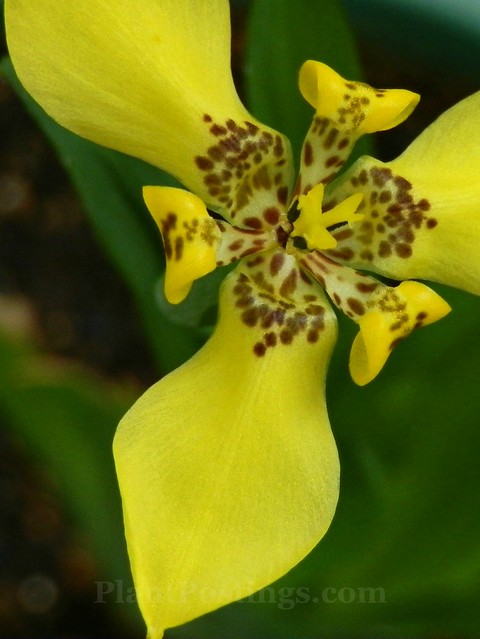
Some of the greatest joys of having gardening and blogging friends are scenes like this:


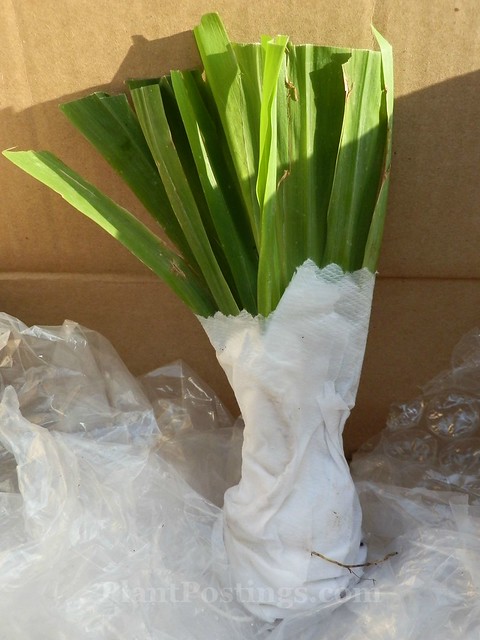
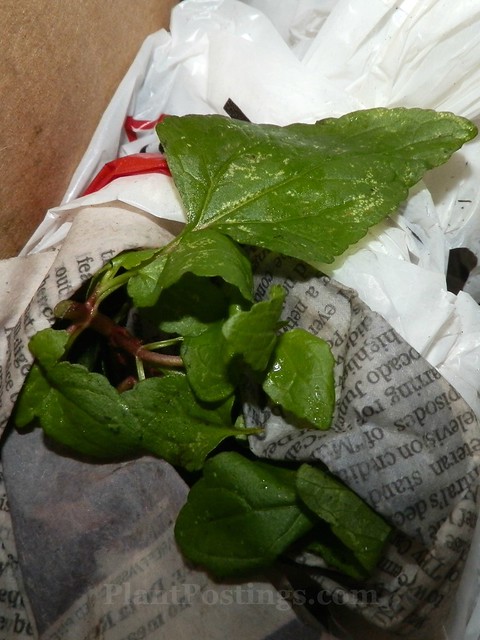
When you plant-swap and garden-share, it's as much fun to give as it is to receive, of course. But that exciting day when the plant package arrives is definitely a high point.
Over the years, I've plant-swapped with many friends. In this post, I'm highlighting two plants I received several months ago from generous benefactors. I've watched these plants now for enough time to adequately report on their progress in the garden.
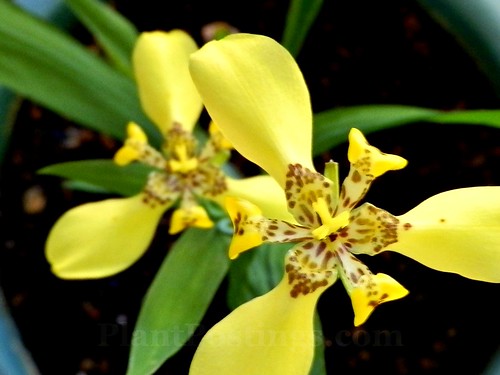
The first plant is a yellow Walking Iris (Neomarica longifolia), a plant native to southeastern Brazil where, according to The Pacific Bulb Society, it grows in light shade in the Atlantic Forest. This plant is hardy to USDA zone 10 (or 8 or 9 in microclimates).
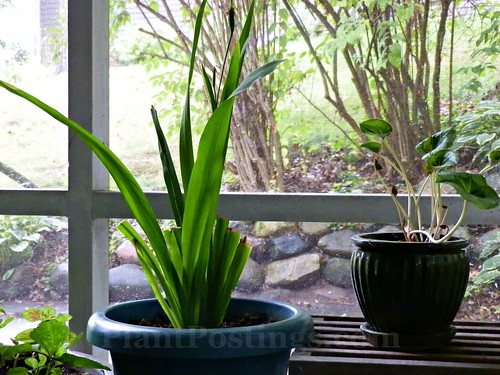
It's been very happy this summer on the southeast corner of my screen porch, where it gets bright morning sun and indirect afternoon light.
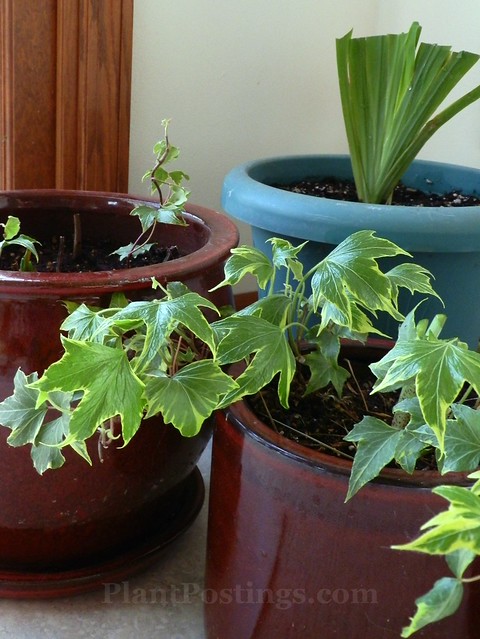
I'll bring the Walking Iris into the partially heated sunroom at the first sign of frost. That's where it lived the first few weeks after I received it in early spring.
Imagine the excitement of seeing it bud for the first time, and then watching each flower bloom in stages over the course of a few hours.
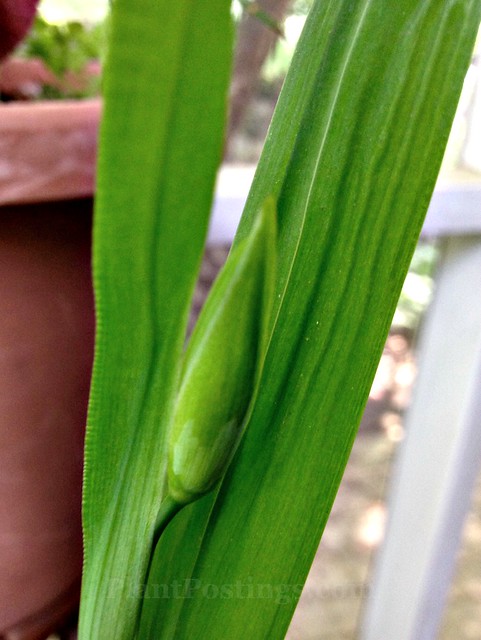
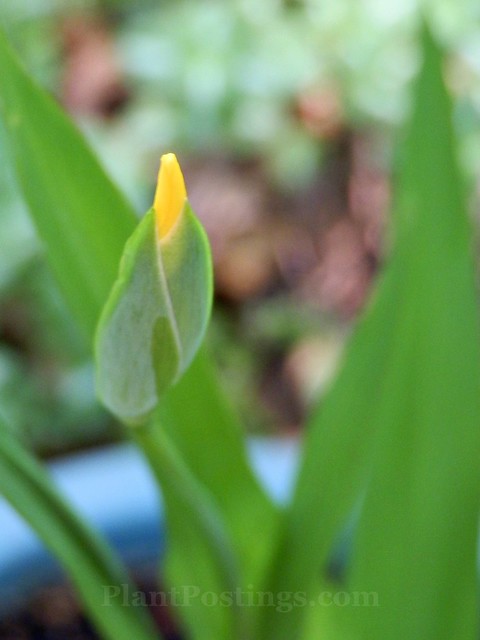
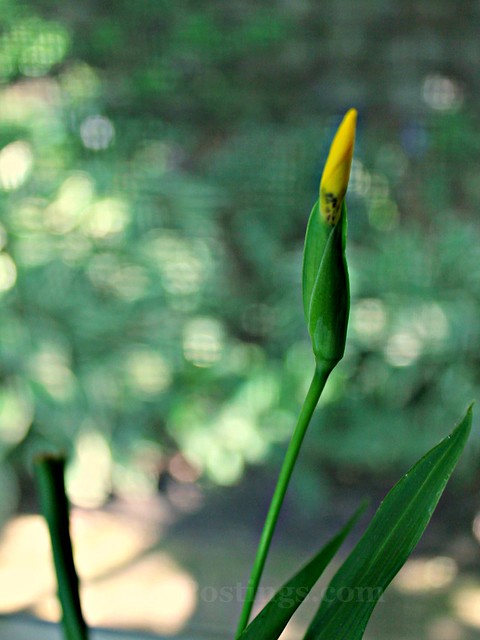
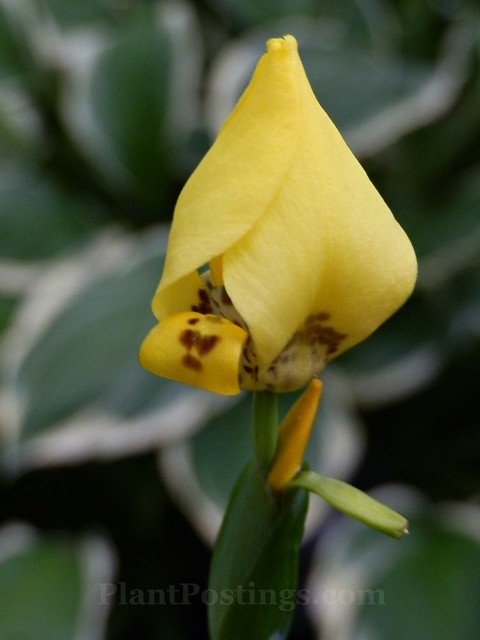
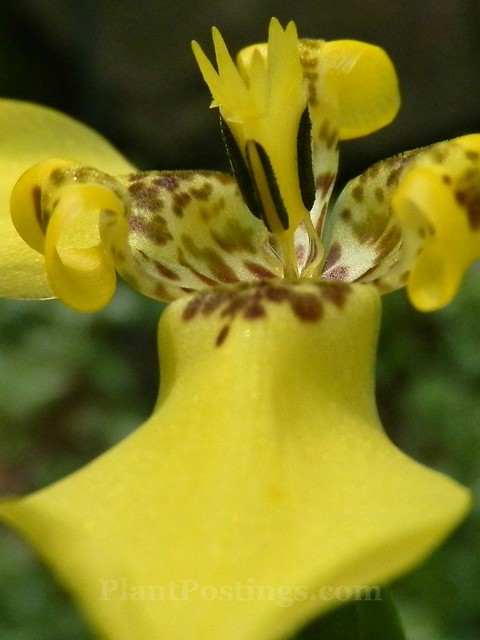
Each bloom lasts only several hours, so it's easy to miss. Fortunately, the plant puts out new blooms for weeks or months, and then ...

Over time, new "baby" plants form from the mother plant, then bend down, and "walk" into the surrounding soil. Hence the name "Walking Iris."

This is a stunning bloomer, and one of the easiest potted plants I've had. It enjoys moist soil and partial shade. The donor of this plant prefers to remain an anonymous benefactor. I am deeply thankful for the gift, which I'll treasure for years to come.
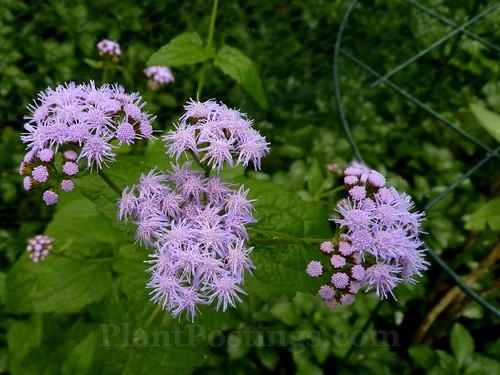
The second plant I'm sharing is Blue Mistflower (Conoclinium coelestinum), which is native to most of eastern and central North America. I purchased several of these plants, and then Tammy at Casa Mariposa helped increase my collection by sending me several starts from her garden.
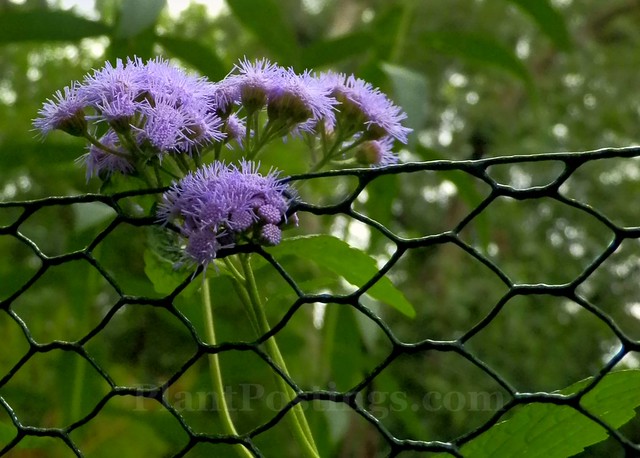
My vision was to have large drifts of them surrounding my Swamp Milkweed (Asclepias incarnata) patch, but that was before I discovered rabbits will eat Mistflower, along with the Asters and ZigZag Goldenrod I so lovingly planted to provide nectar for butterflies. Mistflower and Goldenrod are listed by many sources as rabbit-resistant. That didn't work in my garden, so I had to put fencing around the area. (Long story. Maybe I'll share it in a future post.)
In any case, if I can keep out the rabbits, the Mistflower will naturalize into a cloud of blue blooms within the next few years. Some sources say it can be a "pest plant," but I don't think that will happen in my garden with all the long-eared "pest animals."
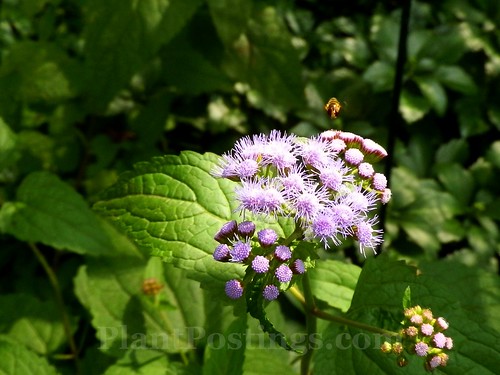
Blue Mistflower grows best in sun and part shade, and prefers moist soil, according to The Lady Bird Johnson Wildflower Center. It's hardy in USDA zones 5 to 10, blooms in midsummer to first frost, and grows to a height of one to three feet.
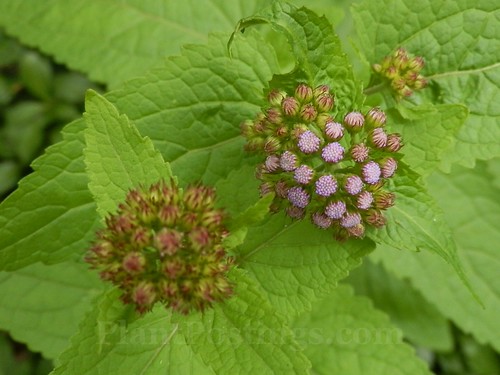
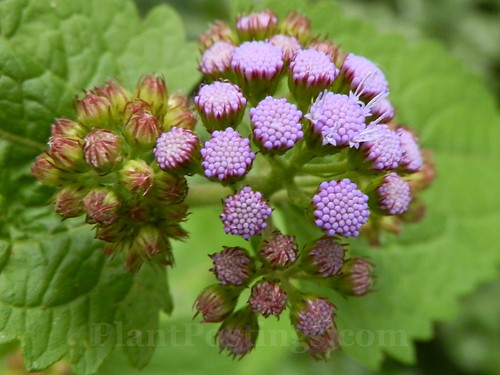
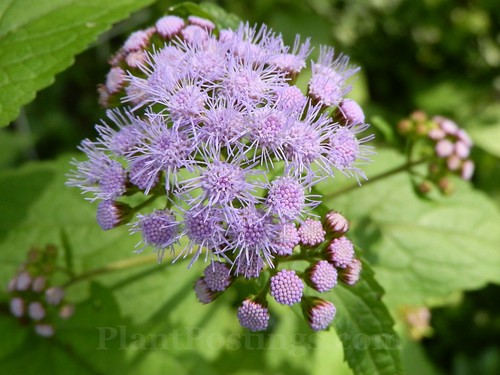
This is a lovely plant, and I'm hoping that adding Alliums around the perimeter will help keep the rabbits away. Then maybe I can get rid of the ugly fencing. I'll let you know next year. Thanks to Tammy for sharing some of her lovely Blue Mistflower plants!
Stay tuned for more plant-swapping results to come in the next growing season. Do you plant-swap? Any particularly special plants you've shared with or received from friends?
Also to mention the familiar plants, it's free, and enriches our gardens. Regards.
ReplyDeleteYes, plant-swapping is great fun and very economical! And it keeps the garden fresh and ever-changing.
DeleteInteresting addition to your garden, Beth! Gardening and blogging friends are special and very generous!
ReplyDeleteI love both plants. Walking Iris is new for me. What fun!
So true, Tatyana! Gardeners are the best! I fell in love with a Walking Iris I saw in Florida last winter and blogged about it. That's how my benefactor knew about my fascination with it. Truly a magical plant. And the Blue Mistflower is the perfect addition to an area I'm trying to fill with native, late season-blooming plants. Wish me luck!
DeleteHow wonderful of Tammy and your anonymous friend! The Blue Mistflower is one I've admired for some time, but I don't have in my garden yet. I hope the alliums keep those rabbits away next year. I've received a lot of plants from blogging plants which I really appreciate, and I always think of them when the plants bloom. The irises you gave me last year didn't bloom, but I'm hoping they will next year. Not every gift has survived in my garden, but one of my favorite is Phlox pilosa, a gift from Gail of Clay and Limestone. It's really made itself at home here, which makes me happy.
ReplyDeleteYes, they are both very generous! I love the Blue Mistflower and was wondering why it was taking so long to establish. Turns out, the rabbits were slowly nibbling it away that first year. Last year, I added more and they were filling in nicely until the rabbits started taking them down again--this time large scale damage! So, I put fencing around the entire area, which is very ugly but apparently necessary. I don't know if the Alliums will make a big difference, but I hope so. I love Phlox flowers--they smell wonderful! I do hope the Irises will bloom for you next year. I think mine took a few years to bloom, too, and then they spread like crazy and had to be divided!
DeleteMy latest share was with a neighbor that likes to garden. She gave me some Canterbury Bells. They are tough as nails and reproduce prolifically. They are very interesting to watch as they don't want or need any effort except to pull out some rambling expansion.
ReplyDeleteThose are beautiful flowers and a great alternative to some of the more invasive Campanulas. I've had some of the invasive Creeping Bellflowers volunteer in my woods. Apparently, they can be a real problem here in Wisconsin. But Canterbury Bells are great garden plants. Also, the native Harebell Campanula is great, too. It's wonderful that you can exchange with your neighbor!
DeleteWow, a flower that lasts only a few hours and I thought daylilies were bad!! I love that mist flower which is new to me. Reminds me of thalictrum but much shorter and thus easier to fit into an overall scheme.
ReplyDeleteYes, I've missed several of the Iris blooms because they happen so fast. That's what makes them magical to capture. Really a stunning bloomer! Regarding the Mistflower, some people refer to it as Wild Argeratum or Hardy Argeratum because it resembles the annuals many people grow in pots. I've found the Mistflower much easier to grow--except for the rabbits! Hopefully, your Alliums will help the Mistflower plants survive and thrive! Thanks! :)
DeleteOh my, my! This is wonderful! How lucky to share plants like these ones.
ReplyDeleteYes, they're excellent plants--both of them! And both are blooming right now. I'm hoping next year the Blue Mistflower will really fill in the area. It's one of the only native plants blooming in my garden right now. The rabbits ate the Goldenrod down to the ground, and the Asters they didn't nibble on aren't blooming, for some reason. Darn rabbits!
DeleteThat walking Iris is stunning. The Mistflower is very pretty too, I know them but I'm not going to plant them, last Monday night I saw 6 bunnies on my lawn.........grrrr.
ReplyDeleteSorry about the bunnies--I understand! They are evil, long-eared, plant eaters! ;-) Yes, the Walking Iris is nifty! I was so excited when I saw the first bud! And now every time it blooms is a special occasion!
DeleteI have more if you want it!! I have LOADS of it! My rabbit proof fencing works well enough that the bunnies aren't coming in to eat it, which is ok with me but I do have to pull it out by the armloads. I'm so glad it's thriving for you. Most of the monarda you sent me heaved out of the soil over the winter. I had to buy replacements this spring. But I do still have one. :o)
ReplyDeleteTee hee. No, I think I have enough now. Thanks! Actually, I also planted them in a different fenced-in area of my garden, and the bunnies don't go there at all! I have rabbit fencing in various spots around the garden, but I can't fence in everything with this lot! Sorry to hear about the Monarda. Sounds like the Whorled Milkweed performed a little better for you? Thanks, again, for the plants!
DeleteIt was suffocated in the Great Salvia Disaster. :(
DeleteOh, too bad. Well, don't be surprised if the Whorled Milkweed pops up on your garden again next year. It's one of those plants that has a tendency to do that. It's very airy and light, though, so it might sneak up on you. ;-)
DeleteThose are beauties, Beth! Plant swapping is such a wonderful idea & definitely something I will look into in the future once I get my perennial beds in order. I'm so envious of people like you who can grow such beautiful plants in pots. I used to do ok with potted plants....and then I had kids. Every since, I've had a black thumb when it comes to indoor plants. Maybe that will start to reverse itself as the kids get older? ;)
ReplyDeleteLOL. My history with potted plants is a mixed story. I've killed many in the past. I finally gave up on African Violets--my grandmother used to have quite a collection, but I could never keep them alive! I know what you mean about the children--that happened to me, too. Now the cats are more of a problem. I have to keep them out of the sunroom because one cat eats plants and the other one uses plants for his litter box. Argh. But I must say, the sunroom is a great place for potted plants during the winter!
DeleteGood luck with the mistflower. It's a lovely plant. I also love it when I get plants in the mail from friends - the favorites I have received this way are Allium 'Summer Beauty' and bloodroot.
ReplyDeleteThanks! I need some luck going forward! 'Summer Beauty' Alliums are a new addition to my garden this fall. I'm excited to see how they'll do in partial sun. Bloodroot is one of my favorite ephemerals in my garden. Lucky you!
DeleteWe have quite a large group of local bloggers and we get together for a swap at least twice a year. These are all plant nuts, so the offerings are interesting and the company is non paraille. The blue mistflower has been showing up in blogs lately. It certainly earns its popularity.
ReplyDeleteThat plant swap with fellow bloggers sounds wonderful! I know there are several plant swaps here locally, so I hope to join one next spring. Yes, the Mistflower is one of those rare, beautiful, full, autumn-blooming plants. I hope it will make some progress this year in my garden and really fill in for next year. Love it!
DeleteLovely Iris Beth! Both you and Catherine Drea are doing blue and yellow (actually she is doing orange, I forgot) this week in your posts! Gorgeous together. I mostly swap vegetables with my neighbors. I have one friend/neighbor who grows a variety of squash I don't do well with and he gives me his starts. I give him my tomato starts. We love the exchange and the friendliness of it! Good luck with your new babies.
ReplyDeleteHi Susie: I used to swap veggies/fruits with my neighbors when I had a sunny garden. Most of my neighbors here have established shade-tolerant landscaping and we don't exchange plants much. Some of my local gardening friends and I swap plants occasionally, though. Thanks--I need the luck!
DeleteBeautiful! They are so familiar for me. And that ageratum grows wildly on the bare land or roadside here.
ReplyDeleteHi Endah: So, is Argeratum conyzoides the one that grows near you? I was reading that it's very common in Malaysia. It does look very similar to our Blue Misflower. It's weird that they aren't the same genus.
DeleteIt is such fun swapping plants with blogging friends. Sharing little bits of our garden. Tammy very generously sent me some seeds of her blue mist flower. I had never come across it here in the UK. I shall be quite happy if such a lovely thing becomes a pest here.
ReplyDeleteYes, it is! And it seems we all have signature plants that thrive and take over in our gardens--plans that we love to share with others. :) And it's fun to receive new lovelies, too!
DeleteLove the yellow walking iris, very pretty!
ReplyDeleteIsn't it a beauty?! More blooms on the way, too!
DeleteHi Beth, your certainly received two wonderful plants through plant-swapping. I find the Walking Iris particularly interesting. The way it propagates itself through building baby plants is really cool.
ReplyDeleteIt is hard to believe that the 'Blue Mistflower' can become a pest. I guess if that would happen in my garden I wouldn't mind ;-)!
Wishing you a lovely weekend!
Christina
Yes, I agree, Christina! I already have a new baby plant forming and it just keeps on blooming. I'd be thrilled to have Mistflower take over my garden, too!
DeleteYour Walking Iris is fascinating! Blue Mistflower could definitely qualify as a weed in my garden, though a lovely one. I do let it grow in a couple of places. There are other "weeds" that have found their place in my garden, and I am grateful for these beautiful wildflowers that don't cost a penny.
ReplyDeleteIt's hard for me to imagine the Mistlfower taking over. Although, now that I have fencing and other barriers around it, it's filling in nicely. I doubt it will become a "pest" here.
DeleteOh guess what I am planting more of... mist flower, zig-zag goldenrod and more asters... Great as I looked at deer resistant first... LOL... Michelle
ReplyDeleteYeah, I know. Last year, the rabbits didn't touch the Goldenrod. They did nibble at the Asters, and I wondered why it was taking the Mistflower so long to fill in. This year, they're eating all three down to the ground. I caught the Asters and Mistflower in time to save some of them, but who knows if the Goldenrod will come back next year. I guess that gives new meaning to planting native plants for the wildlife. LOL
DeleteWhat a wonderful surprise Beth...and such a gorgeous plant to receive as a gift!
ReplyDeleteYes, I'm very thankful, Donna. :)
Delete